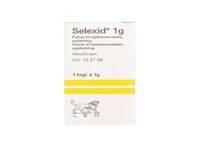CLINICAL USE
Antibacterial agent
DOSE IN NORMAL RENAL FUNCTION
Acute uncomplicated cystitis: 400 mg initially, then 200 mg 3 times a dayChronic or recurrent bacteriuria: 400 mg every 6–8 hoursEnteric fever (typhoid): 1.2–2.4 g daily for 14 days
PHARMACOKINETICS
DOSE IN RENAL IMPAIRMENT
GFR (mL/MIN)
DOSE IN PATIENTS UNDERGOING RENAL REPLACEMENT THERAPIES
IMPORTANT DRUG INTERACTIONS
Potentially hazardous interactions with other drugsMethotrexate: penicillins can reduce the excretion of methotrexate (increased risk of toxicity)Probenecid: reduces excretion of penicillins
ADMINISTRATION
Reconstition
–
Route
Oral
Rate of Administration
–
Comments
Take with food
OTHER INFORMATION
Hydrolysed to mecillinam which is the active drug
